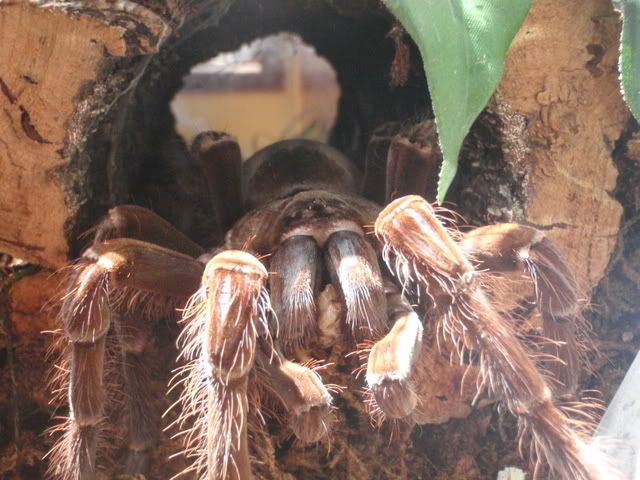Ciphor
Arachnoprince
- Joined
- Sep 2, 2011
- Messages
- 1,640
Curious if anyone can tell me if this is T. blondi or T. stirmi. I understand the hair on the patella can determine this but I am not confident in determining this on my own. Also curious if any successful T. blondi breeders can give me some tips on raising a juvenile. Currently have her in a decent sized glass cage with screen top, half covered to improve humidity. I keep her around 75-80% but when she flips to her back I will do what I can to get humidity higher as I heard it helps prevent losing limbs. Also feed her a good mixed diet with a larger prey once a month to try and mimic the natural diet (small lizards snakes, try to avoid mice) Main diet is large crickets, as many as she wants to eat.
I received the spider from the California Zoology department, ordered via petco, so I am hoping this spider is a true T. blondi


I received the spider from the California Zoology department, ordered via petco, so I am hoping this spider is a true T. blondi






